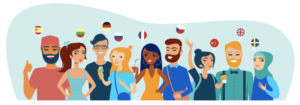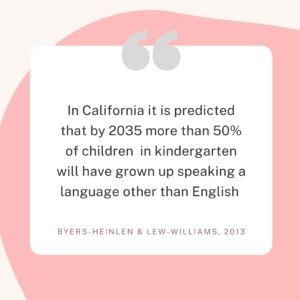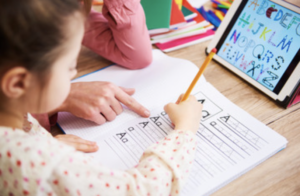
What is Sequential Bilingualism?
- Any individual who acquires a second language after gaining initial exposure and understanding of a first language
- Typically after age three
- Degrees of fluency can differ between the languages
- Degrees of exposure can differ between the languages
- Related terms: second language learner, second language acquisition

What Are Factors That Impact a Child Who is a Sequential Bilingual?
- Age that they are exposed to new language
- Early exposure– typically occurs when the child is exposed to one language at home and a second when they begin school
- Later exposure– typically occurs when an individual immigrated to a country with a different language
- Amount of time they are surrounded by each language
- Which language is learned first and second
- Phonological differences
- Degrees of exposure
- Verbal language– language of family members, music, conversation
- Written language– exposure to books, writing materials
Communication Skills
- Varies greatly depending on factors listed above
- Child often enters silent stage at start, as they take in the new language (normal behavior)
- Communication skills in their primary language impacts potential to learn their second language
- Children could often acquire native-like speech production and accents with their early exposure due to neural plasticity
Intervention for Communication Skills
- Need for support or intervention varies greatly among children
- Areas where support typically comes from
- Teachers in typical classroom
- Speak slower, make eye contact, use visuals
- Peers in typical classroom
- Offer help and engage
- Outside classroom support (ex: ESL class)
- Teachers in typical classroom

What is English as a Second Language (ESL) classroom?
- Programs to support students learning english during school
- Support students with
- Writing
- Speaking
- Reading
- Example of intervention used in ESL:
- Communicative Language Teaching (CLT)
- focus on real life language intervention
- focus on real life language intervention
- Communicative Language Teaching (CLT)
Reading and Writing Skills
- Development of literacy skills depends on the amount of exposure to written language (e.g. story books, alphabet games, etc.)
- Depending on which languages are being spoken and learned, the two languages may be more similar or extremely different phonetically, script-wise, etc.
- Some letters exist in multiple languages, but they can be different phonetically.
- Students can write differently based on the different cultural norms
- Perspectives can differ between languages but are often combined for sequentially bilingual students.

Interventions for Literacy Skills
- Common difficulties with vocabulary, morphology, and syntax, due to differing grammatical structures between languages.
- Many bilingual students are misidentified as special education students
- CLAVES (comprehension, linguistic awareness, and vocabulary) Intervention:
- Focuses on language instruction through vocabulary, morphology, and syntax and uses guided reading, discussion, and writing activities
- Based on four basic recommendations from Baker et al. (2014) on the best instructional methods for bilingual learners:
- Vocabulary instruction throughout several days
- Integrate oral and written language
- Provide several opportunities to write
- Small group instruction
Helpful Resources
http://www.hanen.org/helpful-info/articles/bilingualism-in-young-children–separating-fact-fr.aspx
https://www.learninglinks.org.au/supporting-bilingual-children-in-early-childhood/
Images from:
https://www.freepik.com
https://gratisography.com
Citations:
Participate Learning. (2020, August 13). The benefits of a bilingual brain [Video]. YouTube. https://www.youtube.com/watch?v=-yOI6-rqT8k
